Some people start their side hustle to earn an extra couple hundred bucks a month, and some are thinking bigger. If you’re like me and the people who subscribe to my blog, you intend to build a six-figure side hustle.
Further, you’re not looking for shortcuts or any ‘get rich quick’ solutions. Rather, you’ve discovered your passion and the market demand for it. Now, you really need to find viable ways to start generating revenue.
If you have been following this series, you have already created a website and started some marketing initiatives, and developed financial goals while organizing the many tasks necessary to get your hustle up and running. You may be starting to feel fatigued from all of this work, but this is the time to dig deep and increase your efforts. After all, if making an additional six-figures was easy, everyone would do it.
To make it easier for you, you can always reference part one and two of this series here:
- Want to Start and Build a Six-Figure Side Hustle? Do This. (Part One)
- Want to Start and Build a Six-Figure Side Hustle? Do This. (Part Two)
In this blog, I will go more in-depth about how to conduct effective keyword research, create a blogging strategy, and promote your side hustle. Let’s dive in…
Conducting Effective Keyword Research
In today’s market, ranking on search engines is extremely important. Not sure how important it is? Check out these statistics:
- 53% of buyers in the U.S. use search engines to research a product before buying.
- The #1 link on Google generally gets 32% of all clicks.
- Google currently has 86% of the search engine market.
- 75% of people won’t go past the first page of Google.
Clearly, it’s critical that you get your website ranking highly on Google, or else your potential customers may never find you.
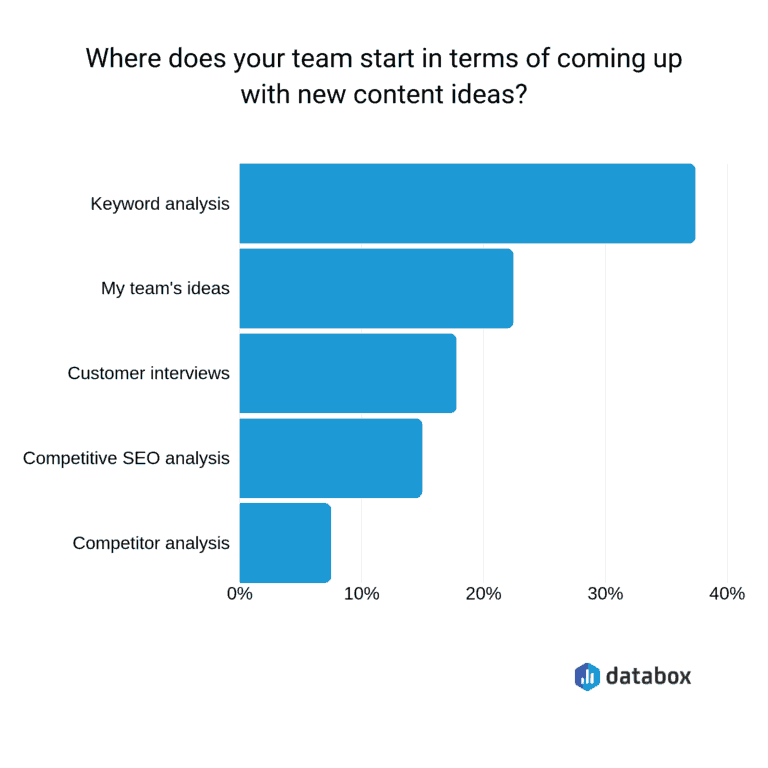
Long-Tail Keywords
The key to ranking highly on Google is using the right keywords in the right way. So what are the right keywords? The goal is to get the people who are looking for a site like yours to find you. So when choosing keywords, focus on intent.
For example, let’s say that you specialize in making matching mother-daughter dresses. If the keyword you choose to optimize is “dress”, then there will be way too much competition to get your website to the top. You will be competing with Nordstrom’s, Macy’s, and any other number of stores that sell dresses. But if you try to rank for “mother-daughter dresses,” there will be much less competition for that keyword, and more importantly, you will guide people to your site who actually want to see what you have to offer.
This is where long-tail keywords become extremely effective. The data shows that half of all search queries are 4 words or longer. Targeting long-tail keywords gives you a fighting chance to reach the top of the search engine sites and also gets you in front of people who are actually looking for your product. It’s truly a win-win.
Keyword Research Tools
So should you just guess? Definitely not. There are many tools out there that can help you make informed decisions about what keywords you should target.
SEMRush has a tool called keyword magic that can help when trying to target keywords. The tool will suggest related keywords based on your seed keyword and help you find which ones will benefit you the most. And with a free trial period, you can try it out to make sure it’s a good fit.

Hubspot also has great keyword research options, however, they call it “topic” research instead of keywords. However, their topic researching tool is much like other keyword tools — you input something you want to be found for, and it will provide options related to that keyword and rank them accordingly. Hubspot also offers a 14-day free trial, which can help if you want to try it out.
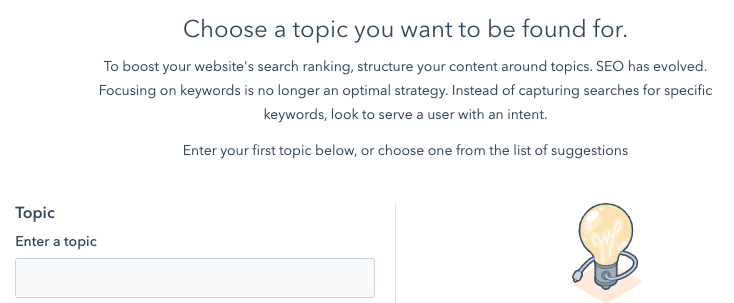
No matter what tool you are using, what you want is a relevant keyword with high search volume but low difficulty. Essentially, this means that a lot of people search for it, but not a lot of websites are optimizing for that keyword.
So, if we continue with the example above, “dress” would be a keyword with a very high search volume, but also a high difficulty level. “Size 10 dress with red flowers and white branches and a blue background” might have a low difficulty, but probably also has a low search volume. But “mother-daughter matching dresses” might have just the right search volume to difficulty ratio.
For more information about keyword research, check out my detailed blog on the subject, entitled “How to Do Keyword Research for Your Blog.”
Integrating Your Keywords
Once you know what keywords you want to target, make sure they are mentioned on your website several times. Have them in headings, within blogs, in the alt text of your pictures, and any other place it makes sense. Always make sure that the keywords are organic in their usage; write for the people first and the algorithm second. Not only will keyword stuffing make you seem disingenuous (and not make sense to any humans visiting your site) but with search engine algorithms being updated regularly, they are learning to avoid sites that just stuff keywords in with no rhyme or reason.
Blogging: Creating Content that Converts
Once you know what keywords you want to focus on, you should create content around those topics. Explain why you got into this business or why you are the best option for your customers. Expound on the roadblocks many people face and how your product or service resolves their issues.
Content Clusters
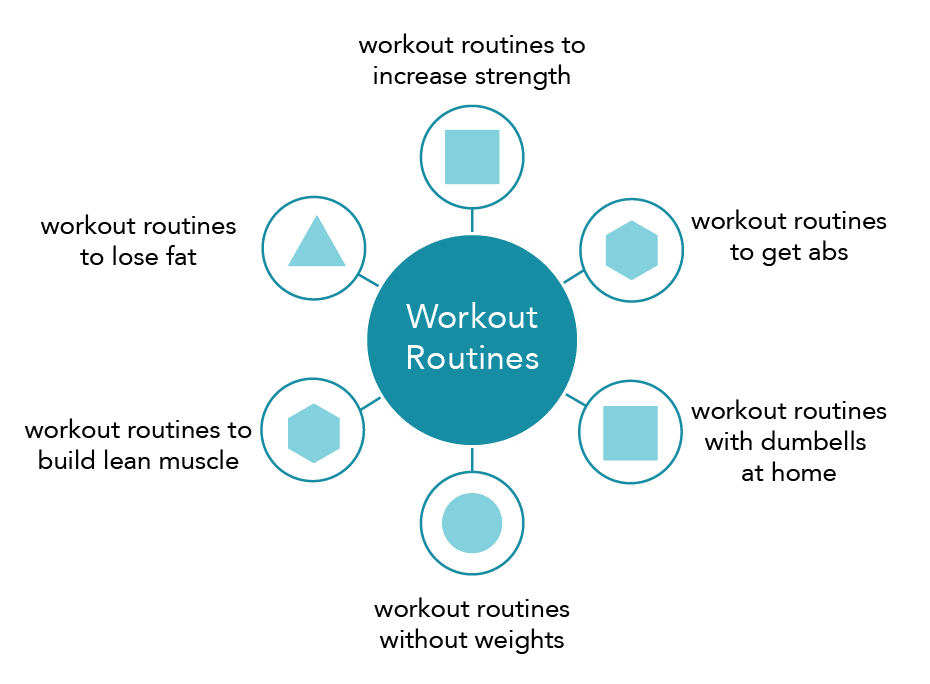
It’s often helpful to organize your blog around content clusters. Content clusters are several blog posts that deal with the same subject but from different angles. If you have a bookkeeping service as your side hustle, one of your content clusters could be doing taxes. So one blog could be “10 Tax Mistakes Small Businesses Make”, while another is “5 Deductions You Should Take on your Taxes This Year.” You can round it out with “Why You Need a Professional For Your Taxes” and “Benefits of Getting Your Taxes Done Early.”
Notice that all of these topics are first aimed to help the reader. If your blog is purely promotional and not informational, no one will want to read it. Your first step is to provide value to your reader.
Also, all of these topics have to do with taxes, which tells the search engine algorithms that if someone wants to get information about doing their taxes, they should come to you. You should have a handful of content clusters that you are focusing on that will lead potential clients to your business.
Buyer’s Journey
Another thing to consider when you are planning out blog topics is the buyer journey, which is often referred to as TOFU, MOFU, and BOFU.
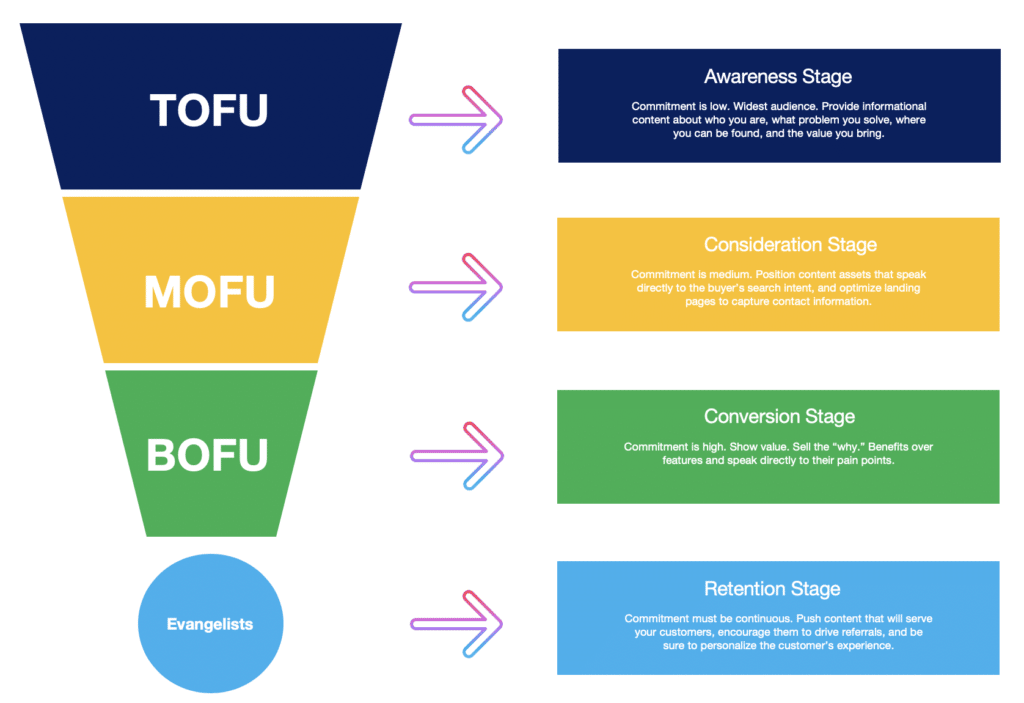
Top of the Funnel (TOFU) refers to clients who may not even realize they need a solution to their problem. TOFU content should be more focused on thought leadership, trends in your particular niche, and brand awareness. Your goal is to help potential future clients become aware of you and your brand.
Middle of the Funnel (MOFU) is when potential clients realize they have a pain point and they may be starting to search for solutions. MOFU content is focused on what problems your product or service solves and why you are an ideal choice.
Bottom of the Funnel (BOFU) is when a client is deciding between a few different vendors. They already know they want to buy, but they are deciding who to buy from. BOFU content will have comparisons to other brands, feature lists, and in-depth product descriptions or videos.
Lastly, we have the retention stage, which focuses on keeping current customers engaged and coming back. This content could include how-to videos for using your product or other ways to help customers to want to come back.
Make sure that your content is not only focused on keywords and content clusters but that there is content that is appropriate for buyers in all stages of the buyer’s journey. Also be sure to include calls to action at the end of your blog posts so that if people are interested in learning more, you can direct them to a landing page or have them submit their email to get regular updates.
Promoting Your Side Hustle
There has never been a better time to promote a side hustle. Whereas advertising of the past required print ads or radio and tv spots, it is extremely easy for anyone to advertise digitally — with an excellent ROI. Digital advertising is not only cheap and easy, but with calculated targeting metrics, you can make sure you get in front of the right people — those who may actually be interested in your product.
There are many different channels in which you can advertise digitally, so it can be easy to get overwhelmed. Here is an excerpt from a previous blog post that helps lay out the pros and cons of the top advertising channels:
Google Ads
This is one of the big ones. Along with Facebook ads, Google Ads is the most dominant digital advertising platform on the Internet today. The statistics are stunning: Google owns the world’s largest online display advertising network.
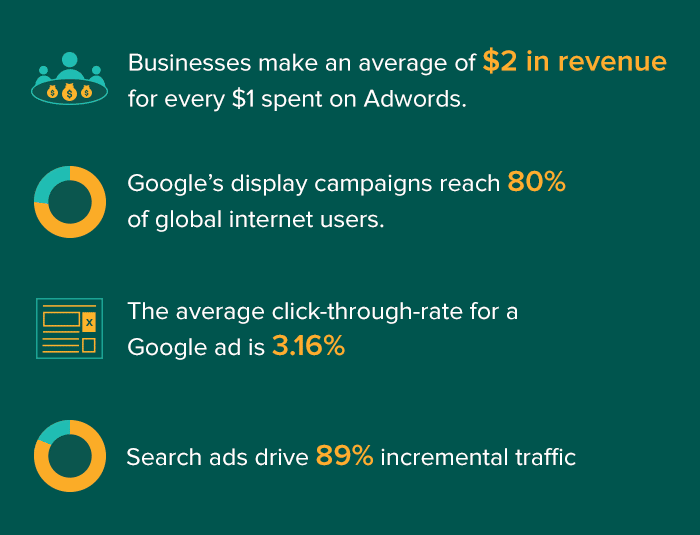
Along with this, search engine users find value in pay-per-click ads. According to a recent study, 75% of respondents said that paid search advertisements make it easier to find information that they are seeking on a website or search engine. Because of this, Google Ads can be an extremely compelling way to reach targeted leads and convert them into customers.
Ultimately, there are several benefits to using Google Ads. It is easy to get started and Google Ads offers an intuitive user interface. There are plenty of destinations for your ads, whether it is on the original Google search engine, Google Maps, or Google Images. There is no minimum budget for your campaigns and you can quickly iterate and improve your current campaigns.
Facebook Ads
Even though Facebook is still a teenager, it has already transformed the digital ad landscape. Along with 2.41 billion active users and being the third-most visited website on the Internet, an average Facebook user clicks on 11 ads per month. And according to one survey, 26% of Facebook users who clicked on ads reported making purchases.
Facebook is clearly a juggernaut and the clear leader in social media ads. One of the biggest advantages of Facebook is that you are able to access a huge global audience for your product. Even though Facebook has received a significant amount of criticism for its data collection policies, Facebook’s targeting capabilities are second to none. Lookalike audiences, for instance, let you easily find Facebook users who are more likely to be interested in your product or service. Facebook also lets you run campaigns for as little as one dollar per day.
Instagram Ads
Instagram has become the shining star within the Facebook suite of digital properties. One of the many reasons is its stellar engagement. Over one billion people use Instagram every month and 500 million people use Instagram stories every day. This year, the average Instagram user will spend 28 minutes per day on the platform. Instagram is also great for advertisers, as one-third of the most-viewed Instagram Stories are from businesses.
Like Facebook, one key advantage of Instagram ads is that you can leverage precise targeting. Because Instagram works hand-in-hand with the Facebook ads platform, you are able to get your ad and message in front of users who are more likely to become customers. Instagram ads also let you use unique ad formatting, whether you want to post your video ad in a user’s feed or take advantage of ads on Instagram Stories. A wealth of analytics—including detail on what your demographics prefer—is also extremely valuable.

LinkedIn Ads
LinkedIn is obviously known as the straightlaced, professional network. In the past few years, it has experienced stellar growth around the world.
Many LinkedIn users are college-educated, and therefore, wealthier than users on other social media platforms. Increasingly, more articles and videos are being posted on LinkedIn, making it a platform that users visit even if they aren’t looking for a new job.
LinkedIn ads can be perfect for you if you are looking for a well-educated audience with discretionary income. There are plenty of targeting options on the platform, allowing you to connect with LinkedIn users who are most likely to become customers. Also, because of the nature of the platform, you are unlikely to be subject to the negativity and criticism that is found on other social networks.
Twitter Ads
Even though it may not be the biggest social media platform, Twitter takes up much of our daily conversation. It has around 145 million monetizable daily active users who discuss everything from politics and business to the latest meme. While the user base isn’t expected to grow at the stellar growth rate as experienced in the past, hundreds of millions of Twitter users visit the platform and engage with each other.
Twitter ads can be a great opportunity because of the massive size of your potential audience and its ease of use. Compared to Facebook, Twitter lets you target particular keywords, phrases, and hashtags, giving you extensive control over your campaigns. You can also take advantage of vast retargeting opportunities and the fact that you only pay for completing an objective.
As you utilize each of these advertising platforms, be sure to constantly be testing and looking at the data. If you find that you are getting a good amount of leads from Google Ads but not a lot from Twitter, it may be time to put more money into Google Ads. Using the data helps you to make informed decisions to hone in your approach so that you get the most bang for your buck.
Wrapping It Up
In this series, we have gone from registering a domain for your side hustle to in-depth marketing techniques. Take a second to appreciate how far you have come. However, there is still more work to do. After all, a side hustle has to include that hustle. Be proud of the accomplishments you have made, but never stop working to improve, expand, and use every dollar to the best of its ability. As you do so, you will see your side hustle go from providing a couple hundred dollars a month to six-figures.
Disclosure: Please note that some of the links above are affiliate links. I only recommend products and services that I use and stand behind, and if you decide to try them, I will earn a commission at no cost to you. Doing so helps me run this blog and provide free content for you, my readers.






One Response